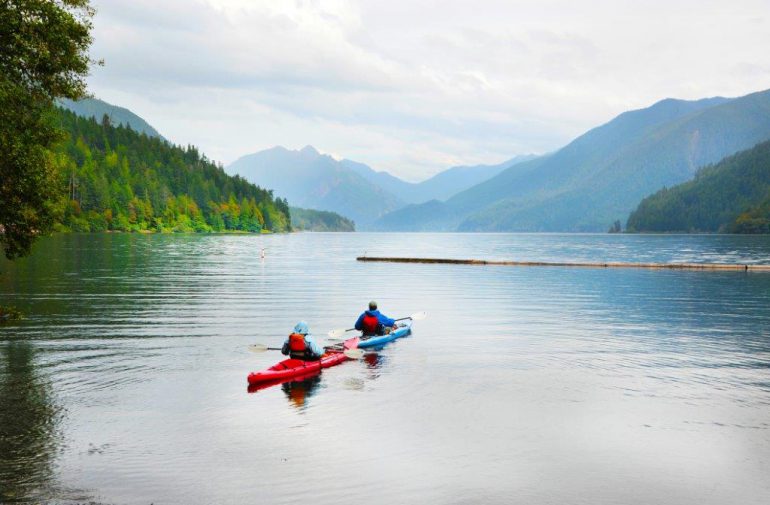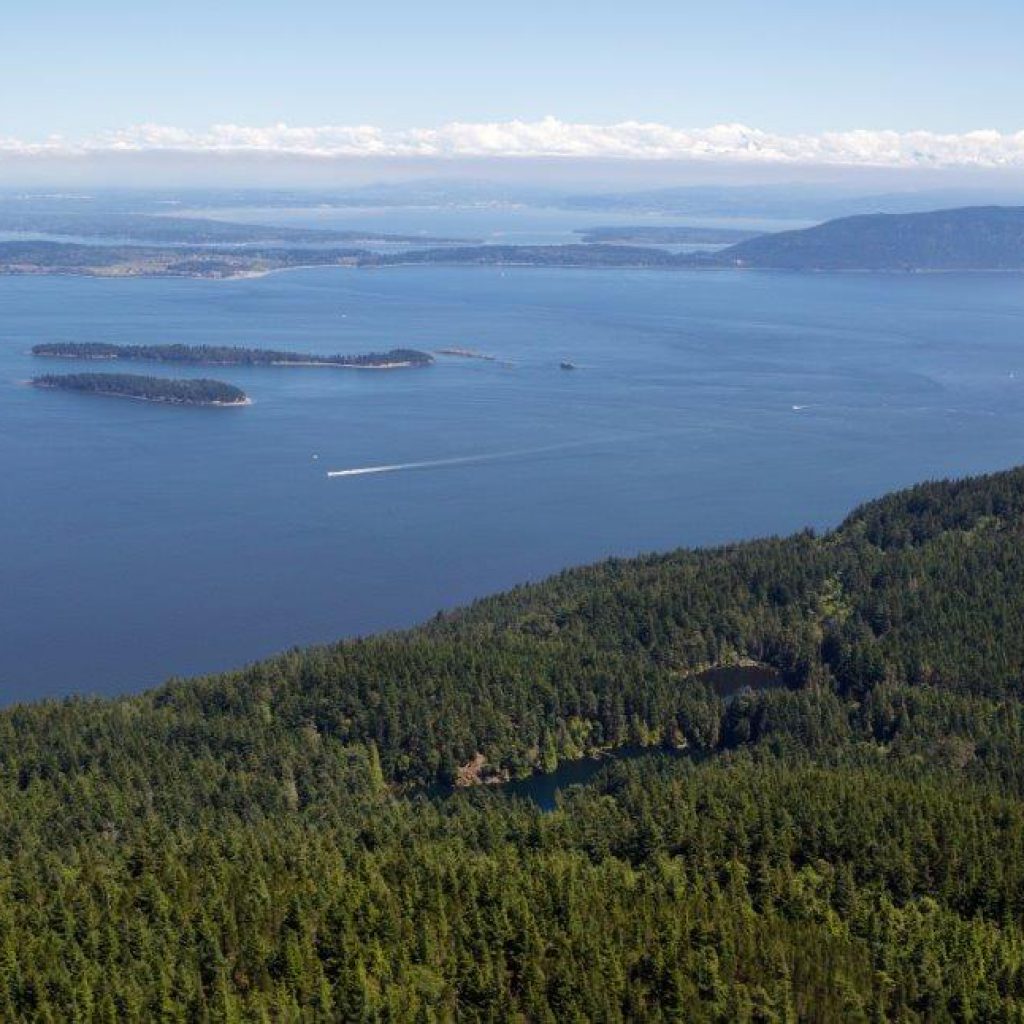Planning On Kayaking the Pacific Northwest?
There are few life experiences that can compare with kayaking the Pacific Northwest. Few people realize that the area of Oregon, Washington, and British Columbia is actually classified as a rain forest even though the temperature rarely breaks ninety degrees in the summertime. Yet you would be hard-pressed to find an area on the Earth that is more beautiful and full of life than the Pacific coast of North America. Here, the bounties of cold-sea currents swell with the richness of biological life, drawing in massive swarms of salmon alongside the migration patterns of sharks and whales of all species. When planning a trip for kayaking the Pacific Northwest, there are so many options available to a tourist that they can spend weeks or even months and not have seen even a fraction of the coasts, shores, forests, and life that populates the region.
It should be noted that there are two separate means of kayaking the Pacific Northwest. The first is sea kayaking, a means of going up and down the coastlines of the United States and Canada with nothing more than the power of your own two arms. This is one of the best means of exploration and travel, as it removes visitors from the stretch of human settlements and exposes travelers to the beautiful, natural coasts of the Pacific Northwest. Sea kayaking requires strength and endurance that may well exceed the capacity of most sedentary lifestyles, meaning that casual travelers may be less inclined to jump into a sea kayaking tour without proper training. It is important to remember that unlike activities like hiking or even mountain biking, the terrain itself is constantly pushing against you in sea kayaking. As such, you need to be able to remain stable and push through the surge of currents (even though they are less intense during summer tourist months) with nothing more than your oars. Every traveler interested in kayaking the Pacific Northwest on sea should be a strong swimmer and have good enough balance to maintain their craft.
Most sea kayaking incidents actually happen on still or relatively mild waters. This is due to the immersion within the cockpit of the water — if the kayaker is unable to properly maintain compose and good form, they run the risk of capsizing the kayak. When this happens, the lure of a calm day draws people far from the coasts and can leave them without a flotation device to make it back to land. A sea kayaker, furthermore, cannot risk waiting out bad weather, but must immediately take for shore as soon as storm clouds threaten to upset the motion of the seas. All these risks, however, are well known to the instructors who assist in expiditions of kayaking the Pacific Northwest: heed their advice and follow their commands and you will not need to concern yourself about the dangers.
The alternative form of kayaking the Pacific Northwest is to pursue the different river routes. Freshwater kayaking is different from sea kayaking in that there is a strong current and sense of direction, so that you need to expend less energy to get to your destination (which will almost always be downriver). River kayaks, furthermore, are smaller and easier to handle than their ocean-going cousins. These are better for families or for first-timers who need to get their feet wet (literally) before progressing onto the harder water trails. The rivers flowing into the Pacific, such as Washington’s Salmon and British Columbia’s Nass, have a lively tourism trade as visitors seek to challenge themselves by having a leisurely voyage down the calm waters. More troubling rivers, on the other hand, offer the challenge of white-water kayaking, which requires far more strength and fortitude. White-water kayakers need to be able to overcome river obstacles that threaten their balance: usually rapids but also protruding rocks, roots, and even the occasional large animal come to take a drink. No matter whether you would like to go on a strenuous river or a more relaxed route, this is a great way to see the beautiful countryside.
One of the most-visited destination for those kayaking the Pacific Northwest are the San Juan Islands. Though the name may suggest a tropical paradise of the Caribbean, these islands are off the coast of Washington state. This area is extremely amenable to water travel, with permits allowing for docking at no charge for up to three days for any person or tourist. Camp spots in the nearby park can be rented for as little as ten dollars per day, allowing visitors to not only engage in kayaking, rowing, swimming, and motor water sports but also get into the interior of the islands and see the sights. Wildlife on these islands are abundant, with deer and raccoon species with little fear of humans as well as dwelling eagles, herons, and other bird flocks. Sea life can often be seen, especially the seal population that gathers in the warm summer months to put on blubber. The whales that prey upon these seals may also make a show, although it tends to be rare for passing kayakers to get a glimpse of the famous orca pods. The night-time sea lights up from the bio-luminescent bacteria, creating a sensation that can only be seen in a few other places in the world. If the light is at the correct angle, it is possible to see the herds of jellyfish floating beneath the surface of the sea.
The history of the region may be well on display if you intend on kayaking the Pacific Northwest at key areas. The populations around the Columbia River of Oregon, for example, still retain a large part of the population and can be seen by those moving up and around the mouth of the river or further out on the sea board. National parks have re-creations entire villages, including the massive longhouses that were used as the center of the community and the lodging of the elders and chiefs. American explorers first came to this part of the world with the advent of the Lewis and Clark expedition, but the natives had long been exposed to European cultures and were quite familiar with trade and technology. Today, the Pacific Northwest holds fests to commemorate the history of the natives, including British Columbia’s Talking Stick Festival. These are a bit inland, but it is still possible to go on tours kayaking the Pacific Northwest and either see the remnants of old settlements or see the contemporary villages that still boast traditional art and designs.
For those who are planning on kayaking the Pacific Northwest, it is imperative to start early in order to be in good shape for your travels. Kayaking requires extreme amount of strength of the deltoids muscles of the back and shoulders. You do not have to hit a gym in order to develop better strength, but plan out a schedule where you spend fifteen or twenty minutes a day where you are carrying around the equivalent of forty pounds of weight to simulate the strain of a kayak. Remember, furthermore, that there are no opportunities to rest on the open sea: if you want to pursue kayaking the Pacific Northwest on the ocean, you will have to condition your body to be able to handle the strain.
The weather conditions are the main issue of concern for kayaking the Pacific Northwest. Unless you are fond of taking risks, it is not advisable at all to go on a kayak trip during the winter. Just do not do it: the storms come on too frequently, approach too quickly, and generate too much force for any but the most experienced boater. Instead, plan on days when the sky is (relatively) clear and there is little wind. While the Pacific Northwest gets more than its fair share of rain, there is little air movement that will upset the sea. Yet the tides are still powerful and will propel your kayak away from or closer to shore. Tides are strongest at the early hours and the late afternoon, so plan on only a few hours of kayaking a day (you may not be physically capable of more than that anyway). Other complications, such as riptides, pose the threat of pulling your kayak away from the coastline. When kayaking the Pacific Northwest, always go with at least one certified guide for safety and security.
- July 19, 2021 - July 19, 2021
- October 19, 2019 - October 19, 2019
- October 18, 2019 - October 18, 2019


